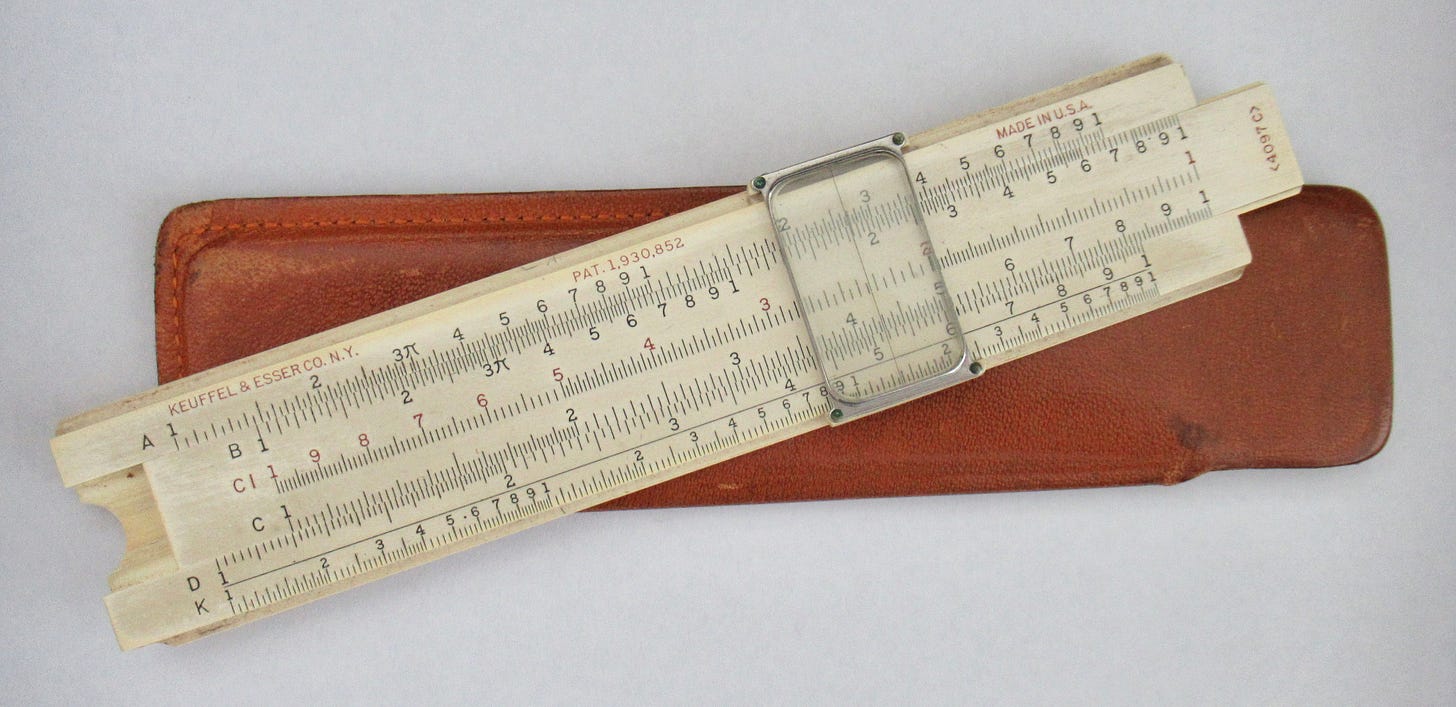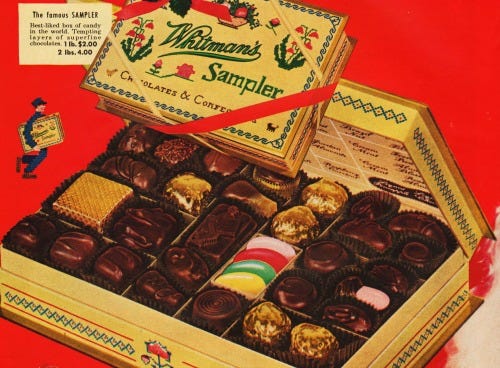Reality, Real and Fictional
While Guppa was working with his pigeonholes, Gumma liked to pass the time manipulating large numbers with one of her slide rules.
Little Follies, “The Static of the Spheres”
I know that this scene is drawn from life. In an interview, Kraft has said this about his maternal grandmother:
One of her favorite pastimes was solving recreational mathematics problems with a slide rule. She would sit on the sofa with her legs curled under her, an open box of Whitman’s Sampler chocolates on the coffee table in front of her, a book of problems in her lap, and her slide rule in her hands. Even when I was a little boy she not only taught me to perform calculations with the slide rule, but also explained why the calculations worked, including a little-boy-version of the logarithmic arrangement of the numerical scales on the slide and the rule. She taught me to interpolate. So, at a very early age interpolation became a metaphor for me, one of the most widely applicable metaphors I know.
The Whitman’s Sampler was introduced in 1912, and became popular over time. … Over the decades, it reached a level in American pop culture in that it was mentioned in many TV shows, movies, and the like. In 1915, a messenger boy was added to the Whitman's Sampler box, which became a symbol of quality. The package of the box resembles the folk art sampler needlework … hence the double entendre name of the product. It was the first box of chocolates to come equipped with an index of all the varieties of the sampler printed under the lid.
Gumma’s affection for the slide rule began when she took an off-season job in one of the slide-rule factories in Hargrove.
Little Follies, “The Static of the Spheres”
I know that Kraft’s maternal grandmother worked for several years at the Dzus Fastener Company on Long Island, not far from Babylon. She had a lifetime affection for the fasteners themselves. She admired the simplicity of their design, their sculptural beauty (that S-curve!), their sturdiness, and the fact that they overcame two major shortcomings of other metal fasteners: they remained snuggly fastened even under vibration, and they could be deliberately fastened or unfastened quickly, with less than a full turn of a screwdriver.
Dzus spiral cam fasteners—named after their inventor William Dzus (pronounced /zuːs/)—are a type of proprietary quarter-turn lock fastener that is often used to secure skin panels on aircraft and other high-performance vehicles. … Invented and patented by an American engineer of Ukrainian descent William Dzus (Volodymyr Dzhus) in the early 1930s, Dzus fasteners are also used to secure plates, doors, and panels that require frequent removal for inspection and servicing. These fasteners are notable in that they are of an “over-centre” design, requiring positive sustained torque to unfasten. Thus, any minor disturbance to the fastener (e.g. vibration) will tend to correct itself rather than proceed to further loosening as it would in threaded fasteners. Turnlock fasteners are available in several different styles and are usually referred to by the manufacturer's trade name.
[more to come on Friday, August 27, 2021]
Have you missed an episode or two or several?
You can catch up by visiting the archive.
You can listen to the episodes on the Personal History podcast. Begin at the beginning or scroll through the episodes to find what you’ve missed.
At Apple Books you can download free eBooks of “My Mother Takes a Tumble,” “Do Clams Bite?” and “Life on the Bolotomy,” the first three novellas in Little Follies.





